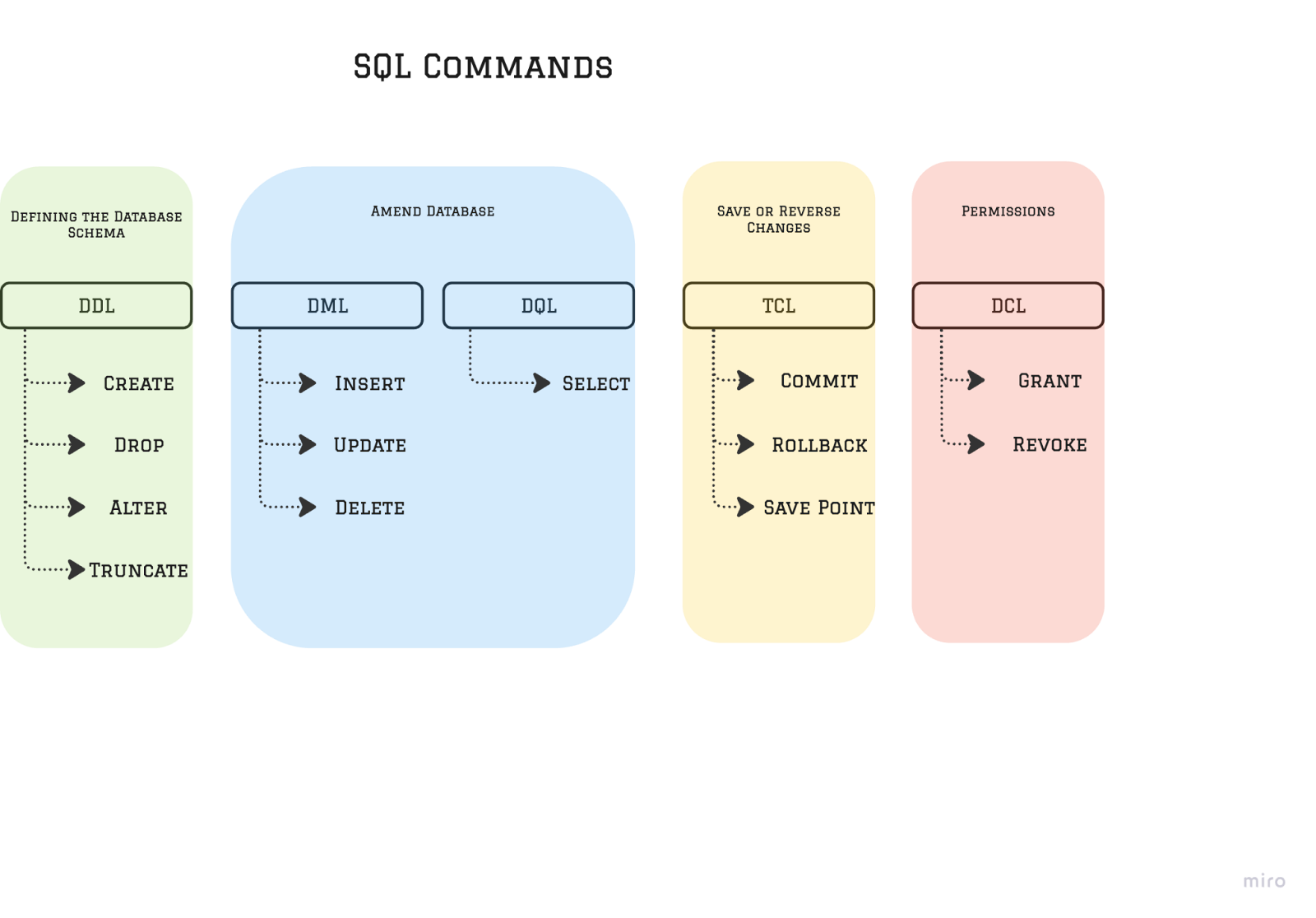course
Topics
Continue Your SQL Journey Today!
2 hours
669.6K
course
Intermediate SQL
4 hours
212.4K
course
Data Manipulation in SQL
4 hours
218.4K
See More
RelatedSee MoreSee More
blog
What is SQL? - The Essential Language for Database Management
Learn all about SQL and why it is the go-to query language for relational database management.
Summer Worsley
14 min
blog
How to Become a SQL Expert
Here’s a comprehensive guide on more advanced SQL concepts and syntax.
Kelsey McNeillie
9 min
tutorial
SQL DML Commands: Mastering Data Manipulation in SQL
Learn more about Data Manipulation Language (DML), how it compares to DQL and DDL, and master DML commands including SELECT, INSERT, DELETE, and UPDATE.
Dustin Luchmee
6 min
tutorial
SQL Commands Glossary—An Overview of 25 Most Popular SQL Commands
Learn the basics of the 25 most popular SQL commands and how to use them.
Bekhruz Tuychiev
8 min
tutorial
MySQL Tutorial: A Comprehensive Guide for Beginners
Discover what MySQL is and how to get started in one of the most popular database management systems.
Javier Canales Luna
15 min
tutorial
SQL Commands for Data Scientists
Learn the basic and essential commands for SQL with examples and a workspace notebook to refer to.
Emiko Sano
12 min

